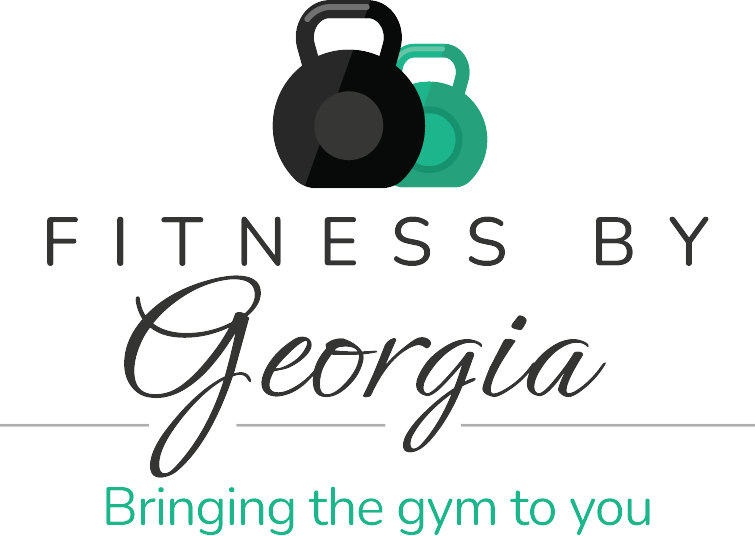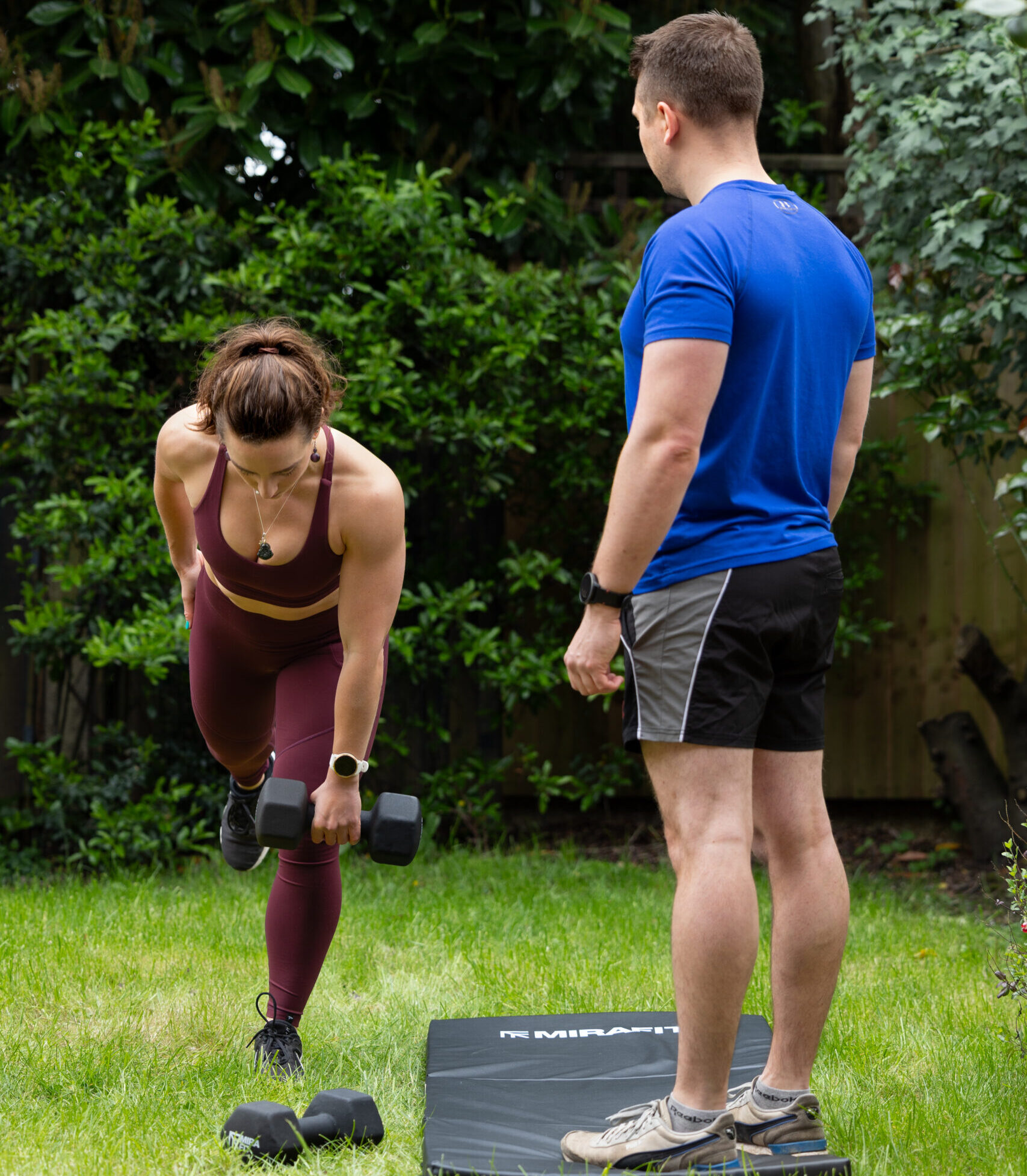This is, understandably, a common thought that crosses people’s minds when they think about home workouts… but it’s not true. You may be at home with limited weights, or even just bodyweight and as a result, it can be a misconception that you can’t have a good workout from home because you can’t lift as heavy as you might in a gym. That’s rarely the case, apart from advanced or very advanced weightlifters.
In exercise theory, there are multiple components to good exercise programming. The FITT principle* covers the key areas that should be taken into account:
- Frequency (how frequently is the exercise being done?)
- Intensity (how intense is the exercise?)
- Time (how long is the exercise being done for?)
- Type (what exercise is being done?)
As you can see, intensity is important when it comes to short and long term programming. So, the question remains – how do you increase intensity without increasing weight?
Increase the sets
If you’re only doing 2 sets of an exercise each, you may be best to slowly increase the amount of sets, so the same muscle is being worked harder. This is more likely to lead to fatigue and even going until failure, which is positive!
Increase the reps (repetitions)
This is an easy win for beginners. Keep the weight the same that is hard, and increase reps. Eventually you’ll get to a point where the weight that was once heavy is lighter work, that’s where you go back to the reps you were doing prior, but with a heavier weight. For example, if you’ve been doing 4 reps of an exercise, you may up the reps to 6 now with the same weight.
For reference, these are the categories of rep ranges:
- Strength: 1 – 4
- Hypertrophy (muscle building): 4 – 12
- Endurance: 12 – 20/25
So, do note, if you’re already doing 12 – 20/25 reps, this is high and going much above this won’t be achieving you results – you are doing cardio, not weight lifting. You should definitely be increasing your weight if you want to build any muscle!
Going until failure
Working a muscle until failure is a common tactic used by bodybuilders and amateur weightlifters alike. It involves doing one exercise for a few reps off being burned out for the first set, the second set is similar, and so on until your last set, where you go until you can’t lift the weight any more or your form breaks down enough that you are not doing the move properly. You may find that with each set you are lifting less as your muscle is more worked – that’s good!
Structured tempo work
This is in an incredibly underrated way to seriously increase intensity, and focus on form! This involves slowing an exercise right down to a structured timing pattern. For example, if you were doing squats, you may adopt a 4:1:1 pattern, meaning 4 seconds to go right down, 1 second pause at the bottom and 1 second to shoot up. As you can see, within this method, there’s also room for growth by extending the number of seconds at any given stage (or all)!
Unilateral exercises or training
Unilateral, like tempo work, is another underutilised way to increase the intensity of a workout. Unilateral means exercises only using one limb at a time. It’s also an absolutely brilliant way to work on bodily imbalances – which everyone has – so if you don’t have at least a few unilateral exercises in your workout, change that today! Some great examples are front or reverse lunges, Bulgarian split squats and single arm chest press.
Specific body part days e.g. ‘leg day’, or even harder still, a ‘glutes day’
A common workout structure is a full body. This is a brilliant option for those with less time, or an inability to commit to a certain number of sessions per week. However, it can mean each muscle isn’t being worked as much as it could. Try splitting your workouts up into ‘upper’ and ‘lower’ body days, or further still, you could do ‘back, biceps and triceps’ and ‘glutes and hamstrings’ for example.
Generally slowing down and focusing on form
Taking time to slow down and focus on form is likely to increase intensity. When you remove power, momentum and ‘bounce’ out of the eccentric and concentric parts of a movement, the muscle has to work harder to complete the movement. For example, if you biceps curl quickly and you do not brace your core, you may find the rest of your body takes over and helps swing your arm up and down, making it easier. If you were to instead stand against a wall and slow the movement down, focus on keeping your elbows tucked and the form great, the exercise will categorically be much harder and the target muscle worked more!
Incorporating more balance work e.g. balance boards
This may be worth considering if you have been lifting weights for a little bit of time. This will help you engage more of your body and core to keep you tight and the working muscle (agonist) will have to contract more and more frequently, while also recruiting more ‘stabiliser’ muscles to keep it steady.
Women, take note! If you are on your period, or just before, it is a common symptom to temporarily lose your balance. Be wary of doing any balance-heavy movements, as to not injure yourself.
Change up your exercises
It’s important to remember, your body adapts incredibly well to exercise(s). Muscle memory is recruited and what was once hard gets easier with practice, more flexibility and time. Consider giving your body a shake up and introducing new exercises. This will trigger muscle stimulation and growth. But note, don’t change exercises too frequently if you want to see muscle building results, as your body does need a certain amount of repeated stimulus to develop muscle. Beware of DOMS with this (delayed onset muscle soreness) – this is just a good sign to you that your body has been shocked and is learning to use your muscles differently!
- To begin with, focus on only changing one or two of these factors at a time, so you have more in your pocket ready to utilise when you need another intensity boost.
- Later, you can combine elements from above and change up the combinations, too.
- Lastly, when all else has been truly exhausted, you may be at a stage where you need to consider purchasing more weights, or accessing a gym occasionally.
If you’re interested in at-home personal training with me, book a complimentary consultation and trial session today and I look forward to meeting you!
*developed by exercise physiologist Dr. Ken Hutchins.

